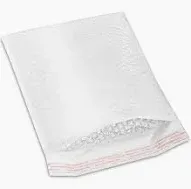Send a cushioned envelope through mail for safe delivery
Mailing a Small Padded Envelope A Complete Guide
In today's fast-paced world, mailing items efficiently and securely is essential, whether for personal or business reasons. One of the best ways to send smaller items like jewelry, documents, or fragile electronics is through a small padded envelope. These envelopes not only offer a layer of protection but are also lightweight, making shipping costs more manageable. This article will guide you through the process of choosing, packing, and mailing a small padded envelope to ensure your item arrives safely and promptly at its destination.
Choosing the Right Padded Envelope
The first step in successfully mailing a small padded envelope is selecting the right one. Padded envelopes come in various sizes, styles, and materials, typically lined with bubble wrap or foam padding. When choosing an envelope, consider the item's dimensions and weight. It should fit snugly within the envelope without excessive movement, minimizing the risk of damage during shipment.
Pay attention to the envelope's closure, as well. Many padded envelopes come with a self-adhesive strip that makes sealing your item easy. This feature is convenient as it negates the need for additional materials like tape, ensuring the envelope is closed securely. Additionally, check for envelopes that offer waterproof and tear-resistant properties for added protection against environmental factors.
Packing Your Item
Once you’ve chosen the appropriate padded envelope, it’s time to pack your item. Start by wrapping your item in protective material such as bubble wrap or tissue paper, especially if it’s delicate. For jewelry, consider placing pieces in small boxes or using separate compartments to prevent scratching or tangling. If you’re mailing important documents, ensure they’re placed flat and free from creases. A rigid mailer can also serve to keep documents flat and prevent bending.
After wrapping, position the item into the padded envelope. Make sure it is centered and not too tight, allowing for slight movement within the padding. This padding will help absorb shocks that could occur during transit. Once you’re satisfied with the packing, carefully seal the envelope using the adhesive strip, ensuring it is securely closed so that it won't budge during transit.
Addressing the Envelope
mail a small padded envelope

The next step is proper addressing. Use a clear, legible font when writing the recipient's name, address, and postal code. For professional correspondences, include the company name, attention line, and return address to avoid mail confusion. It’s also a good idea to use a typewriter or printer for address labels to enhance readability.
Consider affixing a Fragile or Handle with Care sticker towards the address if your item is especially delicate
. This can alert postal workers to take extra precautions during handling.Choosing a Shipping Method
After addressing your padded envelope, you must choose an appropriate shipping method. Most postal services offer various options, such as standard, priority, or express shipping. Evaluate the urgency of the delivery and the associated costs to select the most suitable method.
For more valuable items, consider using trackable shipping services. Tracking can provide peace of mind, allowing you to monitor the envelope’s journey and know exactly when it arrives at its destination.
Final Thoughts
Mailing a small padded envelope is a straightforward task when approached methodically. By choosing the right envelope, packing items carefully, addressing correctly, and selecting a reliable shipping method, you can ensure the safe transit of your items. Whether you are sending gifts, important documents, or e-commerce products, following these steps will help you navigate the mailing process with ease and confidence.
In a world where communication and commerce often depend on reliable mail services, knowing how to effectively mail a small padded envelope can save you time, money, and stress. Happy mailing!
-
Stretch Film Solutions: A Comprehensive GuideNewsJun.03,2025
-
Stretch and Shrink Packaging SolutionsNewsJun.03,2025
-
Revolutionizing Packaging with Modern Wrapping SolutionsNewsJun.03,2025
-
Innovative Solutions for Silage and Window TintingNewsJun.03,2025
-
Efficient Packing with Stretch Wrap SolutionsNewsJun.03,2025
-
Effective Packaging with Stretch Wrap SolutionsNewsJun.03,2025
-
Have the freedom of customizing your custom mailers any way you want! Our dedicated packaging support will help deliver you the mailing experience you need to elevate your shipping experience to the next level! Start making a strong impression on your customers and stand out from your competitors! -
LIYA uses high quality raw materials which directly purchased from large enterprises domestic and overseas such as PetroChina, Sinopec, Sabic, Equate, ExxonMobil, Dow Chemical, Total, and Borouge, ensuring the price advantage and quality of the raw materials. -
LIYA uses high quality raw materials which directly purchased from large enterprises domestic and overseas such as PetroChina, Sinopec, Sabic, Equate, ExxonMobil, Dow Chemical, Total, and Borouge, ensuring the price advantage and quality of the raw materials.





